Wotan on the Beach
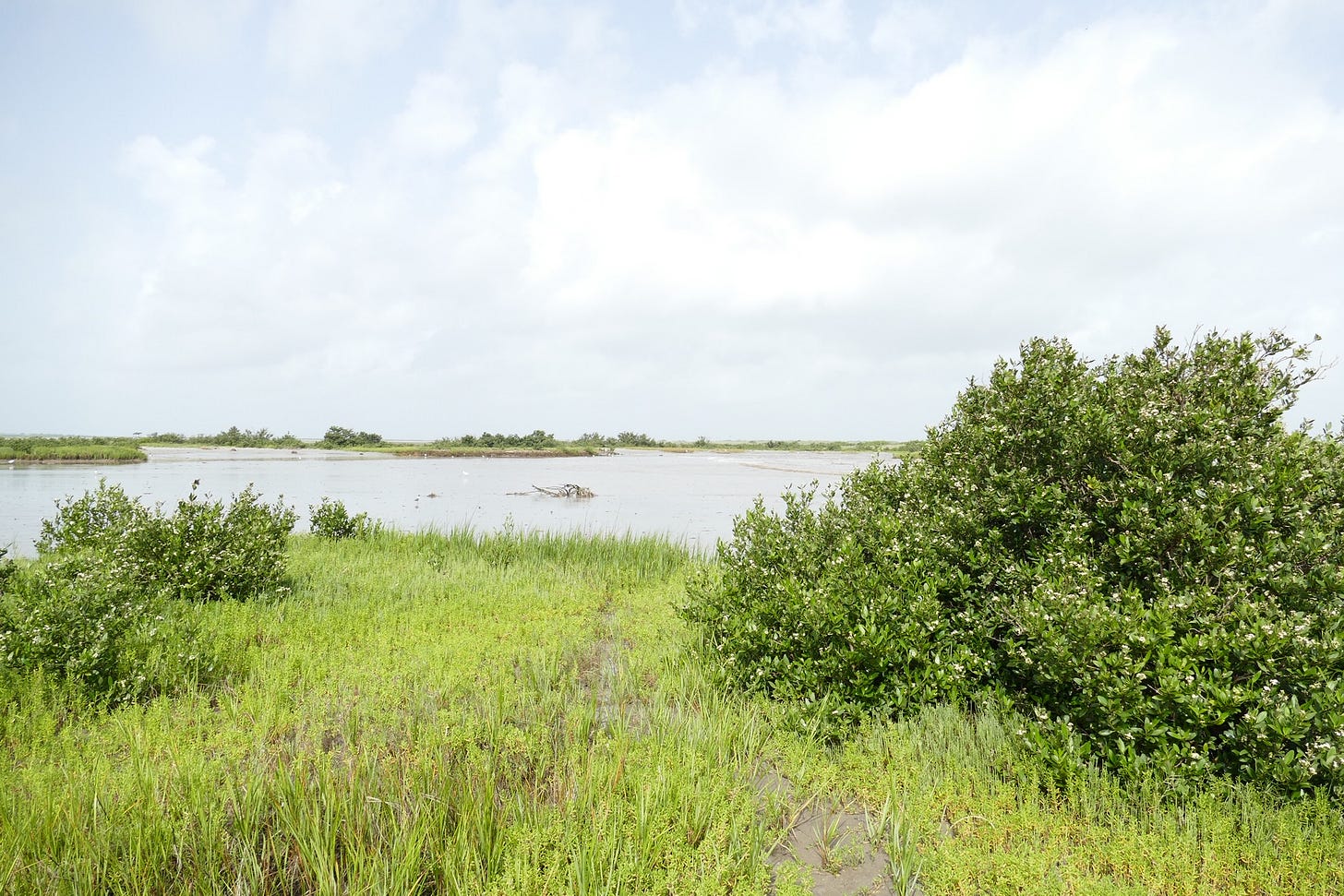
The first time I came to Port Aransas, I found the bayside nature preserve by following the simple rule of walking away from where everyone else is going (the beach). It was a hot August afternoon, and the wetlands were dry and shallow enough to walk right across. There were no signs, and I didn’t even realize I was in a preserve until I saw the first observation decks. The birds were not too active, but the landscape was memorable. A coastal marsh that had been turned into pasture a century ago, and then allowed to go back to wild as a way to attract birders with billfolds.
This week my brother-in-law and I took our daughters to check the preserve out, using the official entrance. It’s at the end of the road past the ferry landing, and the dolphins were out there jumping in the shadows of the big dry-docked drilling rigs across the bay, at the spot where the ship traffic from the refineries of Corpus Christi navigates its way through the channel created by the barrier islands and then out into the Gulf and the open ocean. You can see them from the main beaches, hazy leviathans chugging along the horizon line.

The Texas coast is a place where the bounties of wild nature manage to coexist with the gargantuan infrastructure of the petrochemical industry, which has so completely colonized this landscape over the course of a century that its corporate genealogy is encoded in the place names. The first time I came here, on a fishing trip with my son, we ended a good September day filling the boat with our limit of trout in a big shallow flat named after Brown & Root. There were kayak fishermen in the foreground, with jumping fish on the line, and towering refineries in the distance.
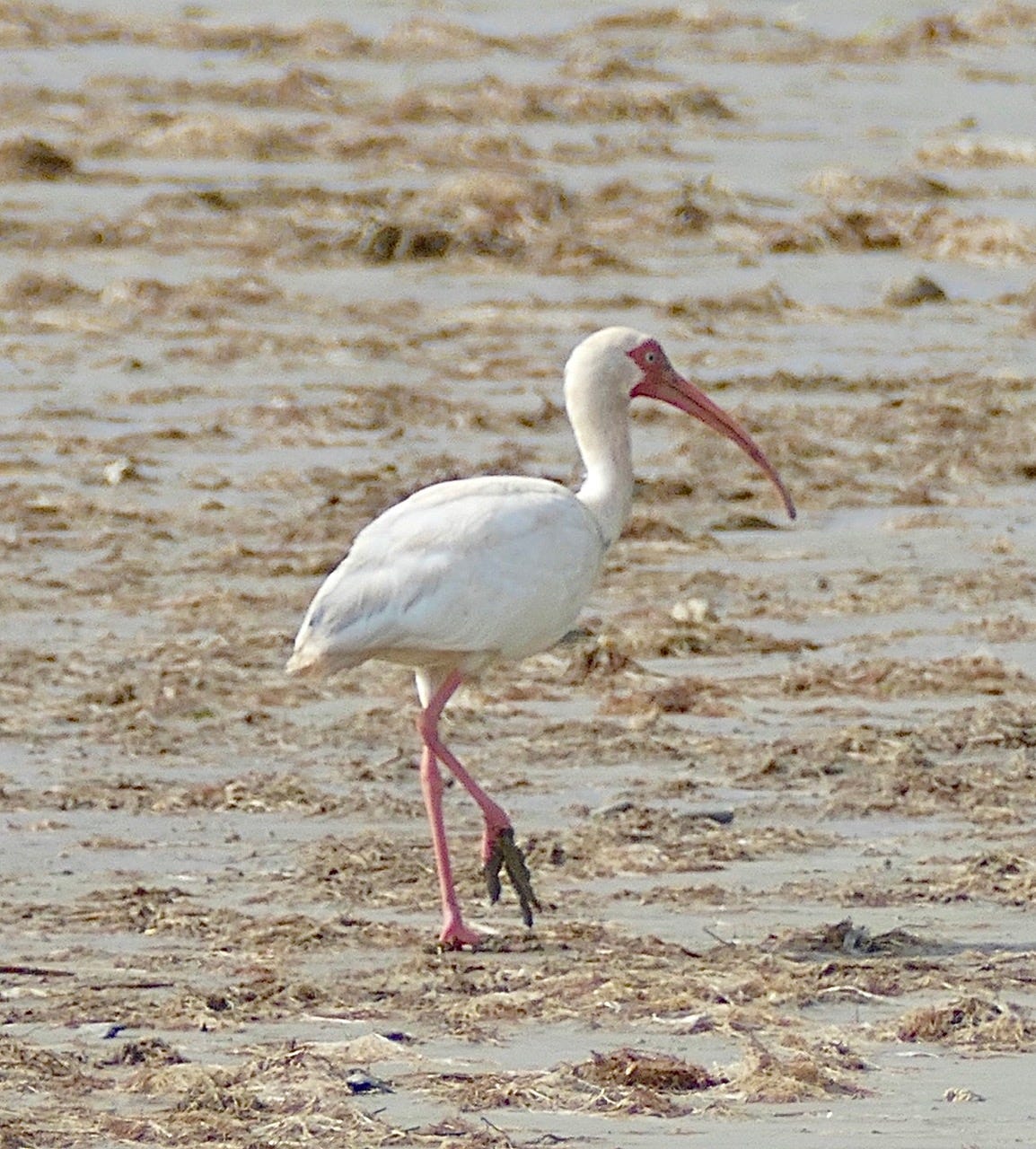
This trip we stood with our young daughters in the little shelter at the preserve, watching the swallows come and go from the nests they had built in its eaves, as one of the tugs pushed a big tanker slowly through the intracoastal and toward the jetty. GASLOG WARSAW. Many of the trails have been closed since Hurricane Harvey, but we decided to follow one anyway and get a closer look at the wetland. Egrets, white ibises and gulls were out there poking around in the mud of low tide. And then came a rush of water: the wake from the tanker that had passed fifteen minutes earlier. You could see the birds were used to this Anthropocene tide, some running toward the wake, others flitting back, all seeming ready to take advantage of the dining opportunities it would create.
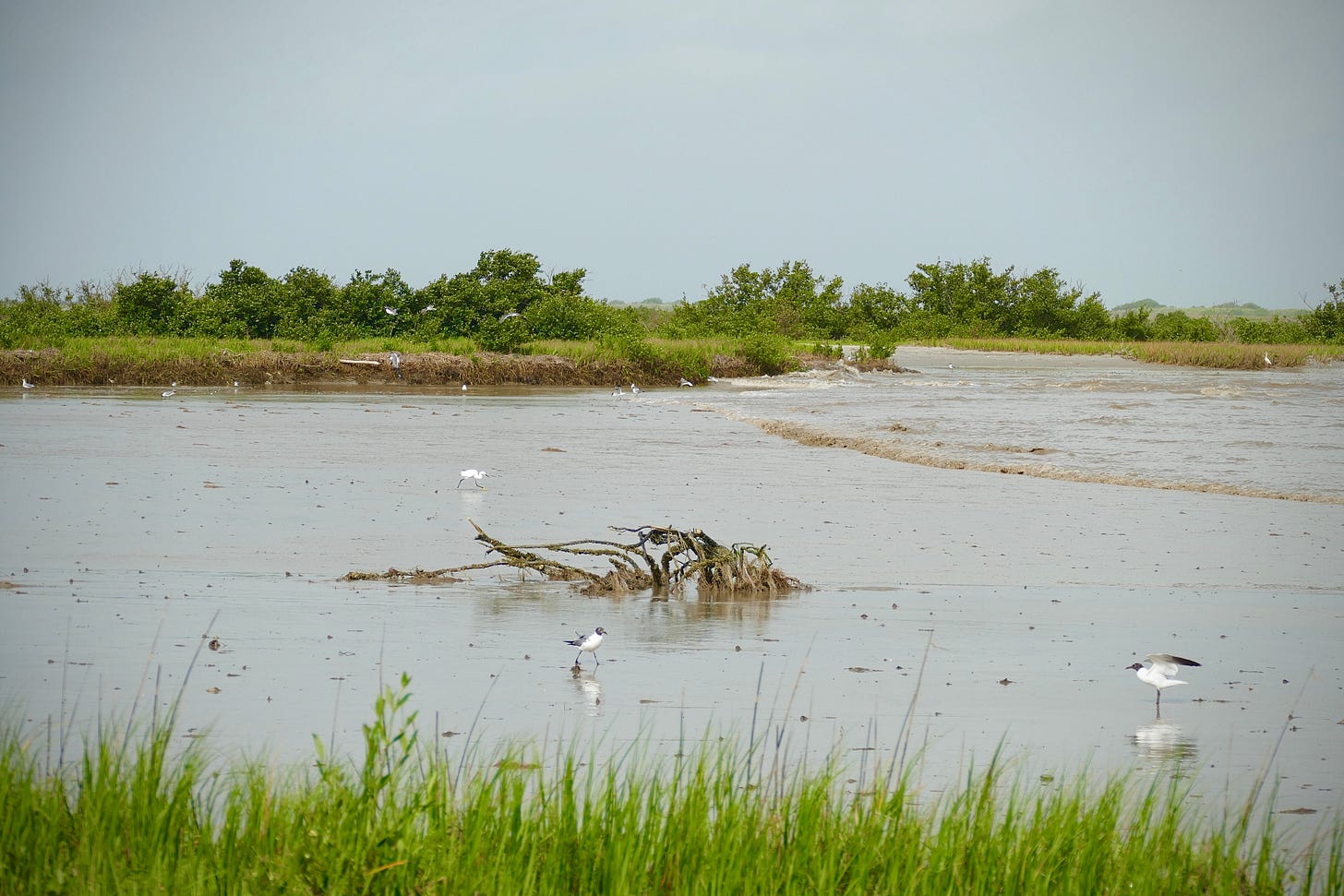
The Saharan dust cloud lingered over the coast for much of our family week at the beach, lending the already-humid conditions a grim haze. The promised exotic sunrises were dark and orbless, accompanied by an intense wind that threw the surf and sand in your face and produced rough breakers and riptide warnings. A friend saw one of my pictures and reminded me of the microplastics that were probably being tossed by that wind as well.
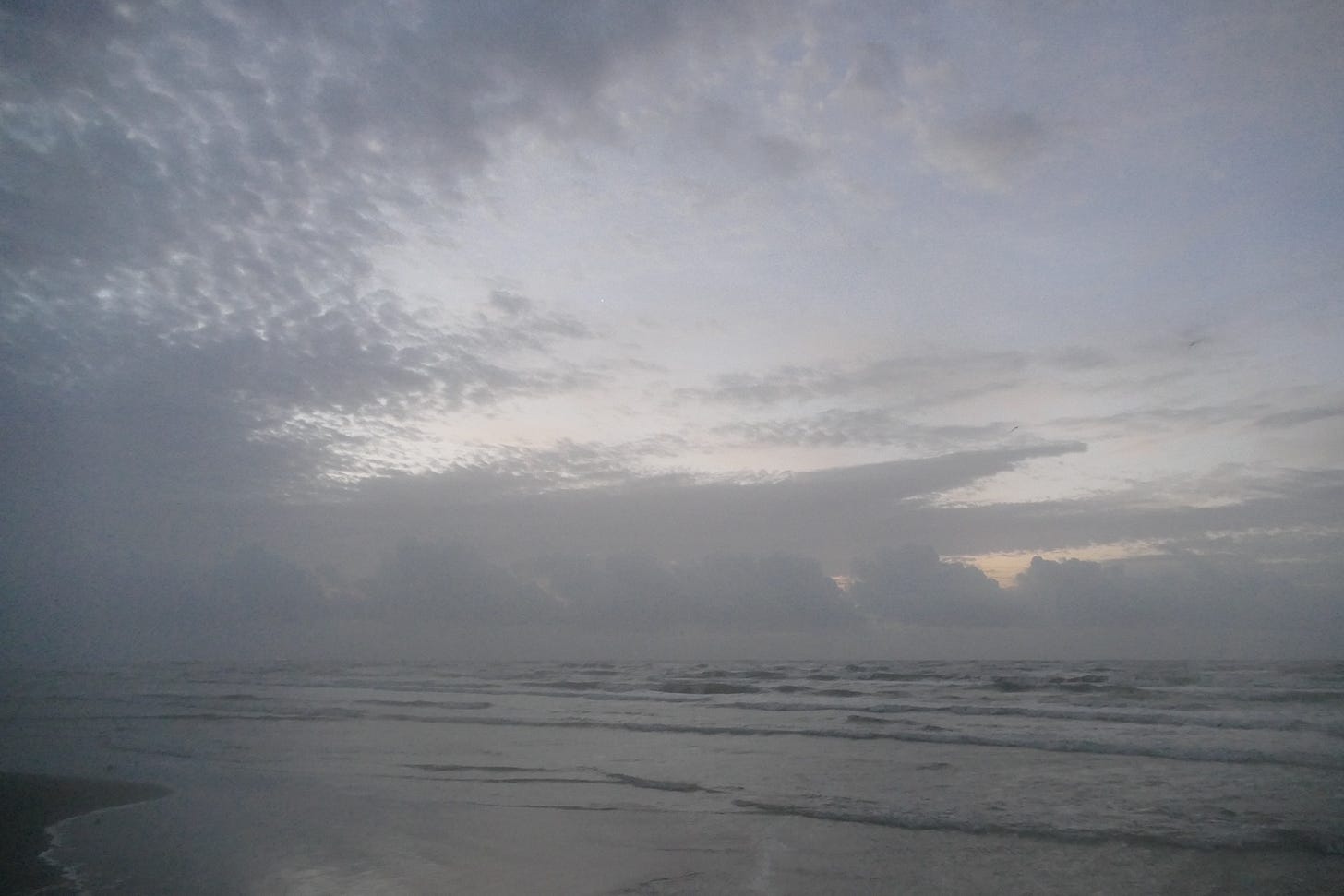
Beachcombing as the tide goes out in the morning, you get a sense of how much trash must be in the water from the barnacle-encrusted plastic bottles that lay in the sand, often with the marks of faraway places in languages you don’t recognize. But there are signs of life, too, fragments of small shells and beached jellies. The kids dig into the sand at the waterline and come up with handfuls of multicolored little mussels shining like gems of bone. And if you swim out into the surf, you may learn (as I did Monday) what it feels like to have your trunks fill with tiny crustaceans trying to claw their way out. They look like grains of sand when you pull them off, but then you see them move. When you learn they are translucent crab larvae that can fill the breakers like rice in a pot, you wonder if that bounty is a sign of aquatic health, or of an impaired fishery up the food chain.
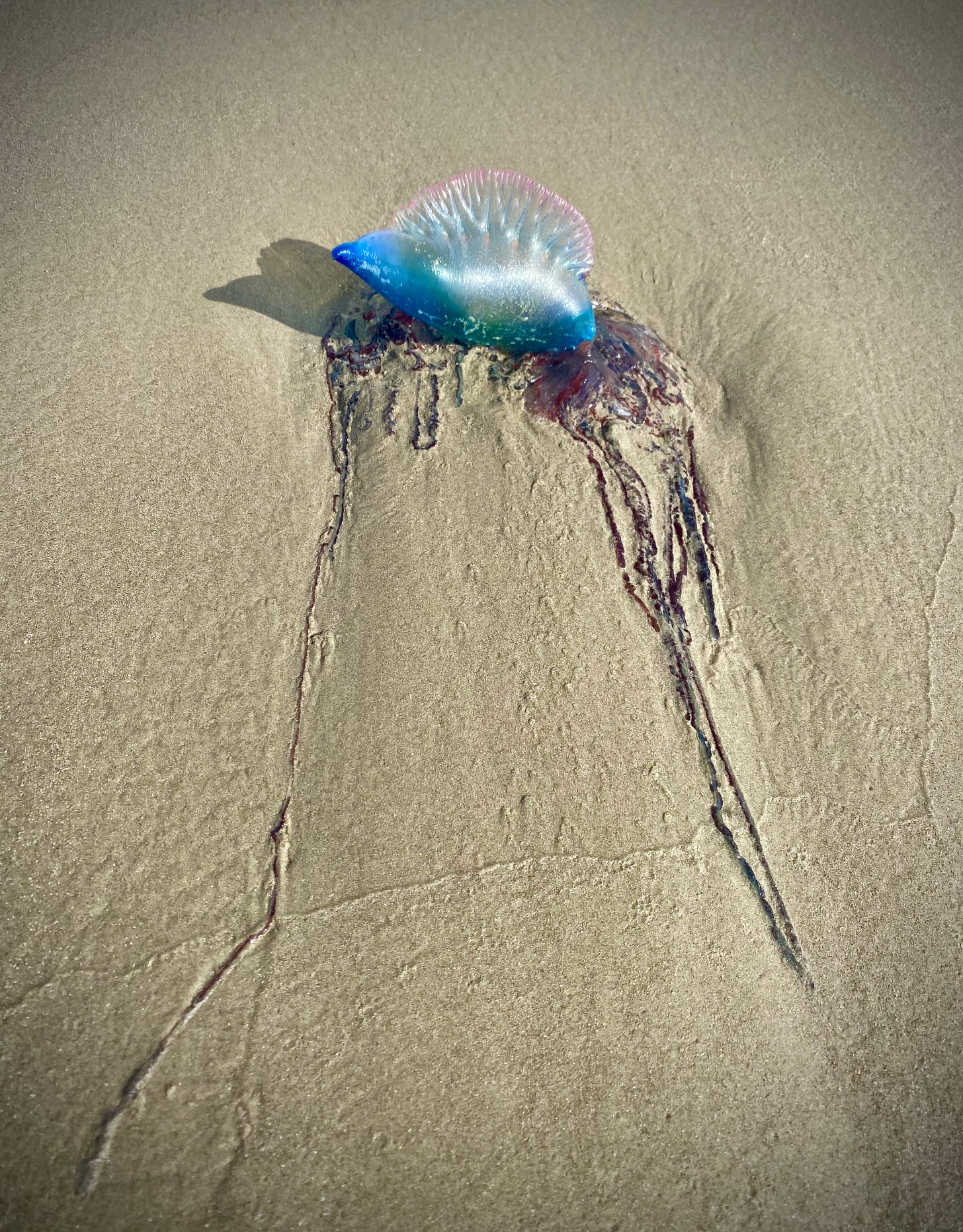
Rambo the Wood God
One of the weirdest things about Texas beaches to a transplant is how packed they are with vehicles. The state constitution guarantees public access, and the sand between the dunes and the high tide line is a public road. So most folks drive right to their spot, in pickups and ATVs loaded with portable shelters, coolers, boom boxes, boogie boards, and everything else one needs to endure a day under the brutal sun.
Many of the vehicles carry pennants designed to help their friends find them in the crowd, and to make proud declarations of identity: sports teams, universities, service branches, and, especially in the stormy Zeitgeist of Anno MMXX, political allegiances. On Thursday the tribal displays were everywhere you looked as the beach filled up with arrivals for the July 4 weekend: one with the current office-holder’s face pasted onto the machine-gun toting body of Rambo, lots of ominous declarations of “NO MORE BULLSHIT,” and one parade club of affluent looking young guys in military-grade Humvees.
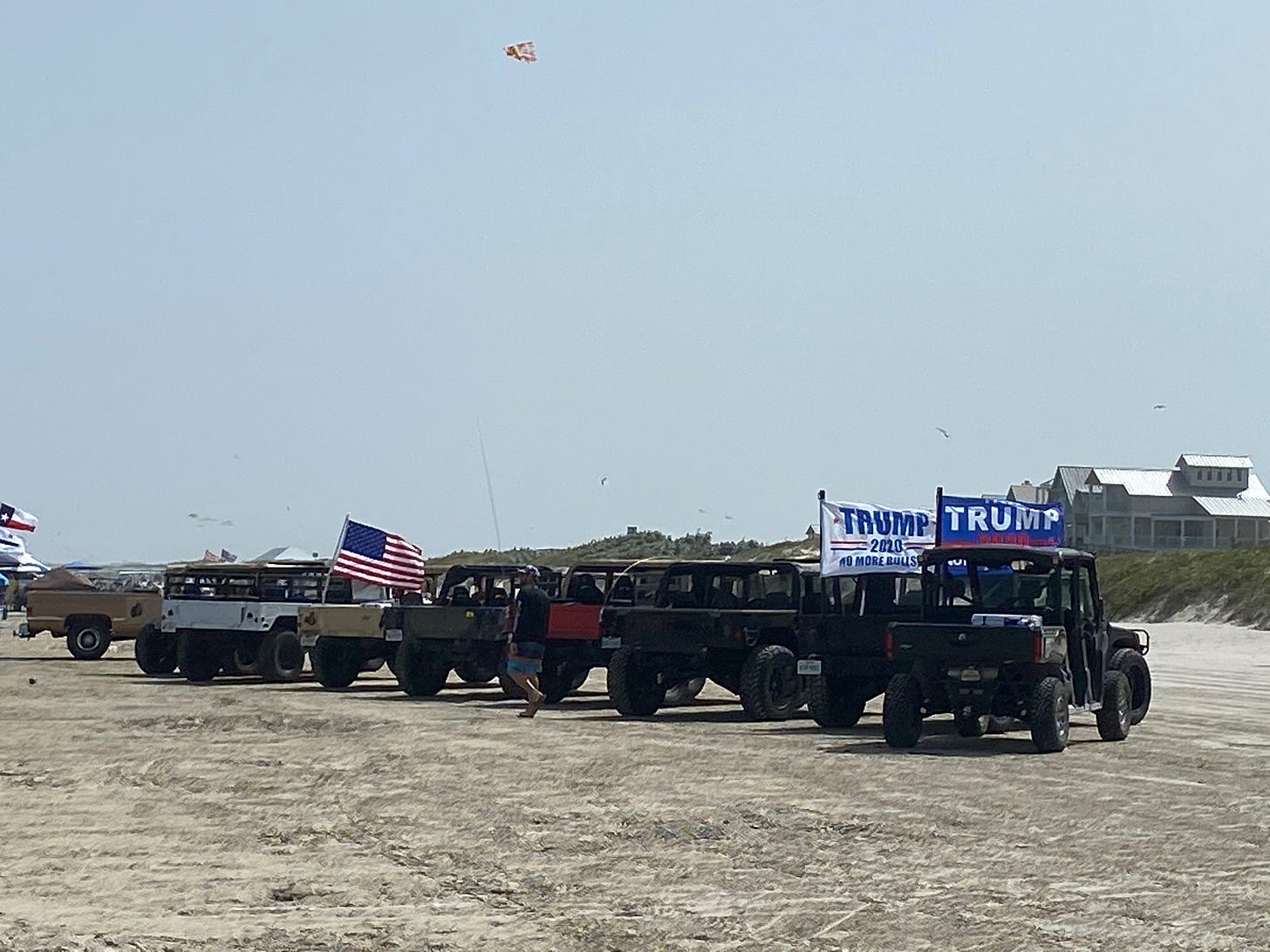
The pelicans didn’t care, lackadaisically patrolling the thermals above beach like big formations of delta wing gliders, occasionally peeling off for a steep dive into the water. But the dark peacocking distracted the humans from the bird life, as intended, and got me thinking about the deeper roots of that behavior and how it connected to the setting we were in.
My beach reading happened to include the 1936 Carl Jung essay "Wotan," research for a fiction project that deals with 20th century German material. It’s an interesting and powerful piece about the rise of the Nazis that marries cultural commentary with a kind of nature writing, one that’s mostly about human nature, but also about how cultural archetypes and collective memory articulate our relationship with nature. Like the resurgence of an ancient wind god whose wild temper seizes the masses, bringing out primitive aggressions civilization was thought to have banished.
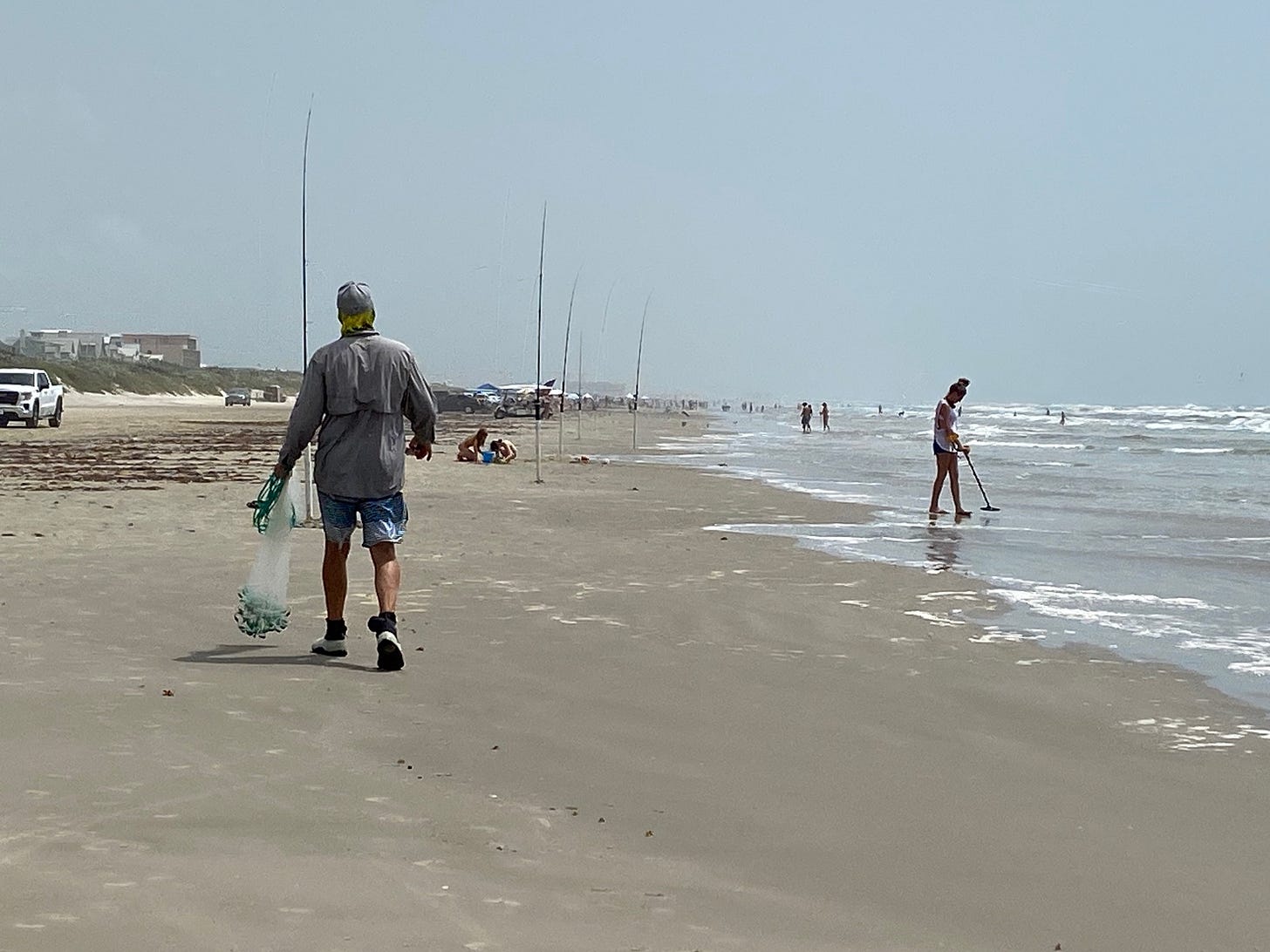
Searching for Jungian archetypes on the beach is probably a fool’s game, and the nation that celebrated its birthday this weekend is too young to have any ancient pagan gods of its own. But as I explored further south on the island, into the zone where the weekend Robinson Crusoes fish in their board shorts with lupine dogs at their side, I got to thinking about the archetypes of American folklore, like the backwoodsman of the frontier, who occupies the liminal space between human settlement and untamed nature. How Davy Crockett and Daniel Boone and the Western scouts morphed into Sergeant York, and then Rambo—the homeless Vietnam vet who returns to what’s left of the wilderness. That figure of the frontiersman sent to war reveals something critical about how we weaponized the skills we developed conquering the American wilderness. And the Rambo meme, in its story of what happens when that figure feels disposed of or insufficiently valorized, encodes a lot more of the trauma that drives our current politics than its unsubtle cartoon would suggest, but that’s a subject for a different forum.
Friday morning, the flags of identity were mostly gone, after the chief executive of the county used her quarantine powers to close the beach off to all motorized vehicles for the long weekend. For a brief moment there on the empty beach in the shadow of an abandoned condo tower you could almost imagine what this place was like 493 years ago when Cabeza de Vaca found himself marooned up the coast at Galveston.
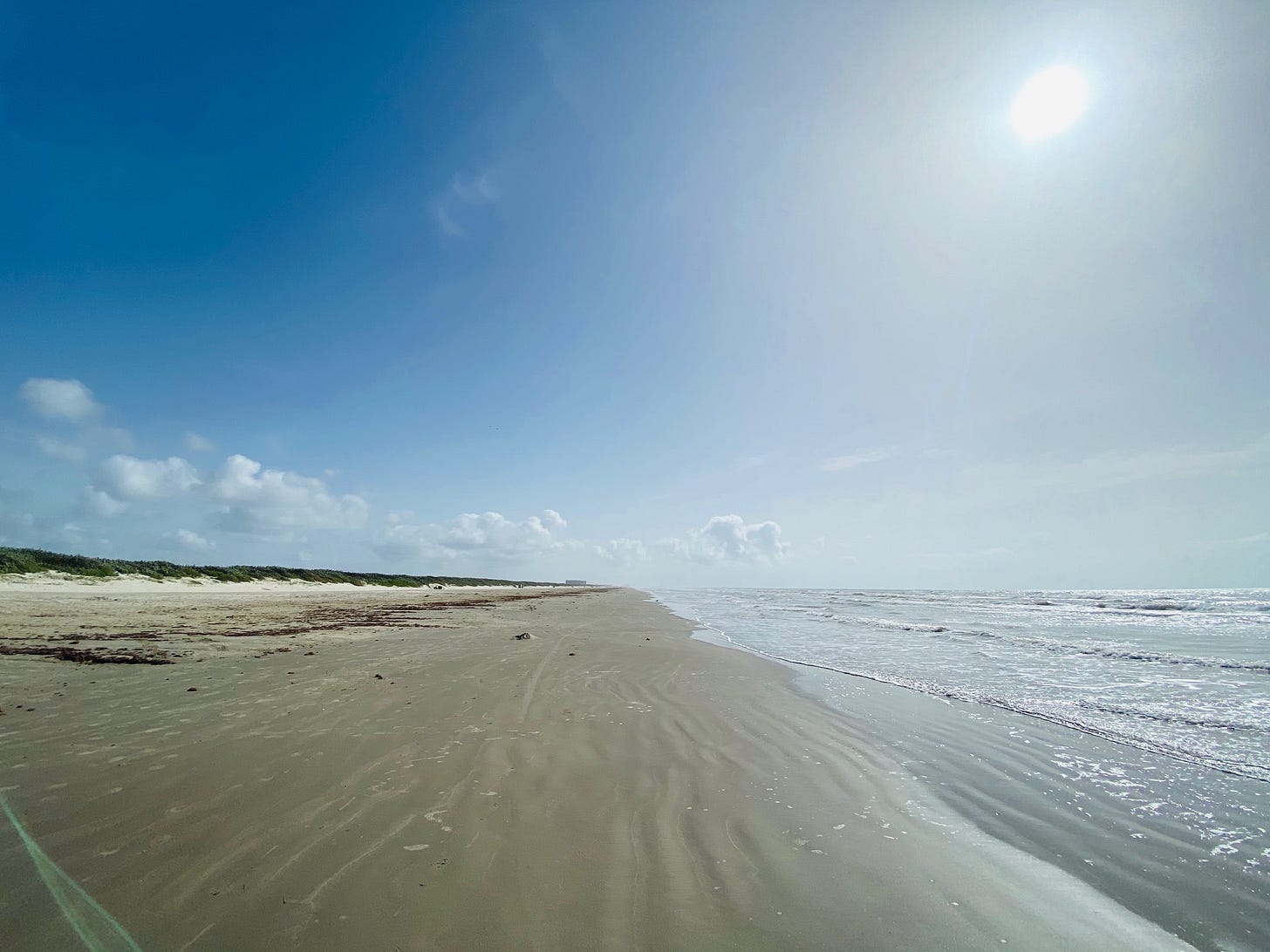
Further reading
For a fuller experience of what this coast was like before us, check out Cabeza de Vaca's Adventures in the Unknown Interior of America (1542).


As usual, your Field Notes are insightful and uplifting. Thank you.